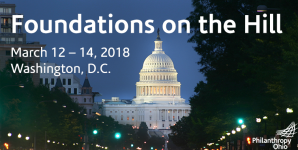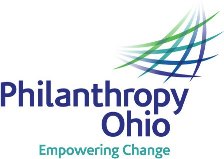How will the new tax law impact the nonprofit sector?
January 22, 2018 at 12:21 pm Philanthropy Ohio Leave a comment
 As the dust settles and we plan our work for 2018, many in the nonprofit sector – funders and grantees alike – are wondering just what the recently-passed tax reform bill will mean for them. It’s a mixed bag of impacts, both potential and certain. Here’s what we know and what we don’t know but anticipate.
As the dust settles and we plan our work for 2018, many in the nonprofit sector – funders and grantees alike – are wondering just what the recently-passed tax reform bill will mean for them. It’s a mixed bag of impacts, both potential and certain. Here’s what we know and what we don’t know but anticipate.
First, the Tax Cuts and Jobs Act did NOT repeal the Johnson Amendment. The law, in place since 1954, prohibits nonprofits from political campaigning; nonprofits can neither contribute to nor endorse candidates for any elected office. Philanthropy Ohio thinks this is a good thing and opposes its weakening and repeal. There are still bills in Congress aimed at repeal, so the sector needs to keep a close eye on those. HR 781, the Free Speech Fairness Act, has 61 co-sponsors including Ohio Representatives Jordan and Renacci and its companion bill, S 264, has 5 sponsors.

Noteworthy among other provisions of the Tax Cuts and Jobs Act is one that will assess a 21 percent excise tax on compensation at nonprofits paying staff $1 million or more. Our colleagues at Clark Schaefer Hackett have a good article that explains the details of this provision, along with the tax on college investment income.
The tax law doubles the standard deduction, which means many current itemizers – projected as high as 95% – will stop itemizing deductions and claim the standard, especially since the deduction for state and local taxes was limited. This will likely impact charitable giving but it’s uncertain at what level. Estimates of projected decreases in giving range in the billions; a study by the Lilly Family School of Philanthropy and Independent Sector pegs the range of potential impact at $4.9 to $13 billion. The Tax Policy Center’s analysis puts the number at the high end; it looked at impacts on various income levels and concluded “the new law is likely to reduce charitable giving by somewhere in the neighborhood of 5 percent. And those gifts will come from fewer—and richer—givers.”

We also know that donors at the higher end of the income spectrum are more likely to give their charitable contributions to arts and culture organizations as well as colleges and universities, while those with middle and lower incomes tend to support organizations providing safety net services – food pantries, homeless shelters and the like. Accordingly, it may be that the tax law disproportionately affects donations to human service organizations.

Here in Ohio, about one-quarter of taxpayers have historically claimed charitable contributions as itemized deductions. In 2015, the latest year for which we have IRS data, 1.1 million Ohioans claimed gifts totaling $5.85 billion, gifts that went to all kinds of nonprofits across the state, nation and world. Ninety-five percent of our state’s itemizers were responsible for over $3 billion in charitable donations; that is a big chunk of money that’s potentially at risk. While we don’t believe that tax policy creates a charitable intent, it does influence the timing, amount and form of gifts. This was clear just this past year, as described in a Chronicle of Philanthropy article that showed online donors gave 38 percent more to charity and made 18 percent more gifts during the last week of 2017 than in the final week of 2016, with 61,000 donations totaling over $14 million given on New Year’s Eve alone.
How can foundations and grantees prepare for the uncertainty posed to their fundraising? One piece of advice: without the artificial deadline of December 31 for tax purposes, resource development, annual giving campaigns and crowdfunding activities need to be planned now and implemented earlier. And, given the proclivity of millennials and others toward online giving, nonprofits need to up their game using social media and technology.

The sector also should ramp up its advocacy activity to lobby for the creation of a universal deduction for charitable gifts. We lobbied long and hard for its conclusion in the tax reform bill, without success, and will renew our efforts this spring when we visit Washington for Foundations on the Hill.

Additionally, we’ll be asking our Ohio delegation to extend and expand the IRA Charitable Rollover, which could open new sources of donations by allowing those aged 59 ½ and over to contribute assets tax-free and by including donor advised funds as eligible recipients. These provisions could offset – at least partially – the anticipated drop in charitable contributions, continuing the strong American tradition of giving by individuals to help neighbors and by foundations to invest in addressing critical community needs.
Claudia Y.W. Herrold
Entry filed under: Uncategorized. Tags: charitable giving, donors, foundations, Free Speech Fairness Act, giving, Johnson Amendment, nonprofit, Philanthropy, Philanthropy Ohio, Tax Cuts and Jobs Act, tax policy, tax policy center, Tax reform.

Trackback this post | Subscribe to the comments via RSS Feed